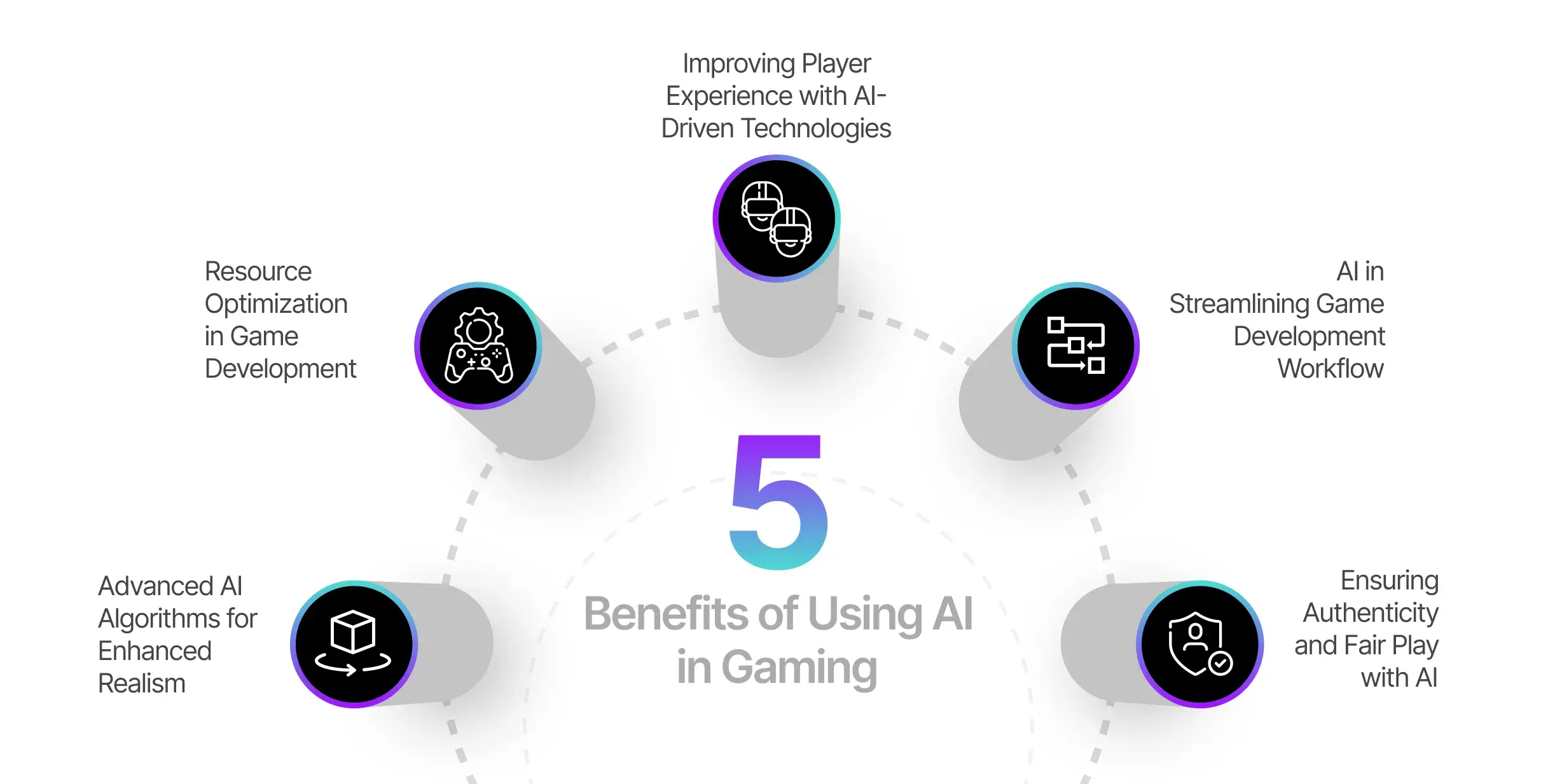Intelligent Systems Forge Gaming’s Future Reality

The video game industry, a global behemoth in the entertainment landscape, is currently undergoing its most profound transformation since the advent of 3D graphics. This revolution is powered by Artificial Intelligence (AI). Far from being relegated to simple Non-Player Character (NPC) routines, AI—particularly the advanced subsets of Machine Learning (ML) and Generative AI (GenAI)—is fundamentally rewriting the playbook for content creation, player engagement, and operational efficiency. The integration of intelligent systems promises not only to accelerate the development pipeline but also to unlock unprecedented levels of immersion and personalization, positioning AI as the definitive, high-value keyword for investment, technology, and software development discussions in the digital sphere.
I. The Generative AI Revolution in Asset Creation
Generative AI is arguably the most disruptive force, tackling the high cost and time sink of traditional asset production. For years, major studios faced multi-year development cycles due to the sheer volume of high-fidelity content required for modern open-world and AAA titles. GenAI provides a powerful solution to this bottleneck.
A. Accelerated 3D Model and Texture Production: Artists can now use text prompts or basic sketches to generate complex 3D models, textures, and material maps in mere minutes. This is a dramatic departure from the manual, painstaking work of sculpting, retopology, and texturing.
- Impact: Reduces the asset creation timeline, allowing artists to focus on high-concept polishing and unique hero assets rather than repetitive environmental objects. This significantly lowers production costs, a key metric for investors and high-CPC advertisers focusing on efficiency solutions.
B. Procedural World Generation with Intelligence: While procedural generation has existed for decades (e.g., in Minecraft), GenAI infuses it with logic and artistic coherence. ML models trained on vast datasets of real-world or stylized environments can generate entire continents, cities, or complex dungeon layouts that feel handcrafted and meaningful.
- Impact: Creates truly infinite, non-repeating game worlds, boosting game replayability and player hours—metrics highly valued in the Live Service Games market.
C. Dynamic Audio and Music Composition: AI models can compose, orchestrate, and adapt in-game music and sound effects in real-time. Instead of a pre-recorded loop, the soundtrack dynamically shifts based on the player’s actions, emotional state, or in-game events, dramatically enhancing immersion.
- Impact: Increases the perceived quality of production value while automating a highly specialized, and often expensive, part of the post-production pipeline.
II. AI’s Role in Next-Generation Player Experience

The most exciting evolution for the player is the shift from static, authored content to adaptive, personalized experiences. AI moves the game from being a fixed product to a responsive ecosystem.
A. Intelligent and Sentient NPCs: Current NPCs are limited by state machines and scripted dialogue trees. Large Language Models (LLMs) are now enabling characters to remember past interactions, engage in genuine conversations, and possess goals that dynamically change based on the player’s global impact on the game world.
- Impact: Elevates role-playing and immersion. NPCs become believable inhabitants rather than simple quest givers, driving deeper player investment and loyalty.
B. Adaptive and Real-Time Difficulty Balancing: AI can track over a hundred player metrics—including reaction time, movement efficiency, resource management, and emotional data (if captured via external devices)—to instantaneously adjust enemy difficulty, resource placement, and puzzle complexity.
- Goal: To maintain the player in the optimal “Flow State,” a psychological zone where the challenge perfectly matches the skill level, preventing both frustration (too hard) and boredom (too easy).
- Benefit: Dramatically boosts player retention and reduces churn, which is a critical commercial metric for any subscription or live service game.
C. Personalized Monetization and Content Recommendations: Machine Learning algorithms are masters of predictive analytics. By analyzing a player’s behavioral and purchase history, AI can predict which cosmetic item, booster pack, or expansion they are most likely to buy, and at what specific moment.
- Example: Presenting a targeted offer for a ‘Stealth Gear’ skin immediately after the player completes a successful stealth-based mission.
- Impact: This hyper-personalization leads to higher conversion rates and increased Average Revenue Per User (ARPU), directly linking to the ‘high CPC’ commercial interest for game publishers.
III. Streamlining the Development and Quality Assurance Pipeline
The integration of Machine Learning into the backend of game development fundamentally changes how teams work, significantly improving efficiency and quality control. This is the operational side of AI that captures the attention of high-value B2B tech advertisers.
A. Automated Game Testing (QA Bots): Quality Assurance (QA) is traditionally a labor-intensive, repetitive process prone to human error. Reinforcement Learning (RL) agents—or “QA Bots”—can be trained to explore game environments far more thoroughly than human testers. These bots can play millions of game loops overnight, intentionally seeking out exploits, physics breaks, and edge-case crashes.
- Benefit: Shortens the iteration cycle, identifies bugs much earlier in the pipeline, and dramatically reduces the cost of post-launch patching and maintenance.
B. Optimized Code and Resource Management: Machine Learning can analyze codebases and game performance data to automatically flag inefficient code segments, memory leaks, and unnecessary resource draws. AI can even suggest more optimal rendering techniques or asset streaming configurations.
- Impact: Leads to better overall game performance, increased frame rates across diverse hardware, and a more stable product, minimizing technical support costs.
C. Predictive Project Management: By analyzing historical development data (time spent per task, bug density per feature), AI can provide highly accurate forecasts for project timelines, budget overruns, and resource needs.
- Benefit: Reduces the risk associated with large-scale projects, making it easier for studios to secure funding and deliver products on schedule, a vital factor for financial stakeholders.
IV. Ethical, Legal, and Financial Considerations

The rapid acceleration of AI integration is not without its complexities, particularly in areas of high financial and legal risk, which further drives up the value of related advertising keywords.
A. Intellectual Property and Copyright Risk: GenAI models are trained on massive datasets, often including copyrighted human-created artwork, code, and music. This raises complex legal questions about the ownership of the AI-generated output.
- Challenge: Studios must carefully vet the training data of any AI tool they use to avoid future legal liabilities and ensure the assets created are truly clean for commercial use. This demand for ‘clean’ AI tools is a massive commercial opportunity.
B. Bias and Fairness in AI Models: If the data used to train AI models reflects societal biases (e.g., in character design, narrative roles, or environmental scarcity), the game’s content will inadvertently perpetuate these biases.
- Solution: Developers must adopt a robust AI ethics framework, actively curating training data and implementing fairness checks to ensure AI-generated content promotes inclusivity and avoids harmful stereotypes.
C. The Human Workforce Transition: While AI streamlines repetitive tasks, it creates an essential shift in human roles. The need for concept artists, writers, and QA testers transitions to a demand for AI Prompt Engineers, Data Curators, and AI Ethics Specialists.
- Financial Impact: The higher salaries commanded by these specialized AI-related roles will affect studio cost structures, attracting investment-focused content on workforce planning and human capital.
V. Conclusion: The Intelligent Future is Now
AI is transcending its role as a simple technological feature to become the foundational operating system of the entire game development and player experience ecosystem. The key takeaways for the industry and for high-value advertising are clear: efficiency gains from generative content creation, unprecedented monetization and retention from personalized player experiences, and a complete overhaul of the quality assurance and project management pipeline. The studios that master the ethical, legal, and creative integration of AI will not merely survive but will decisively dominate the future of interactive entertainment.








